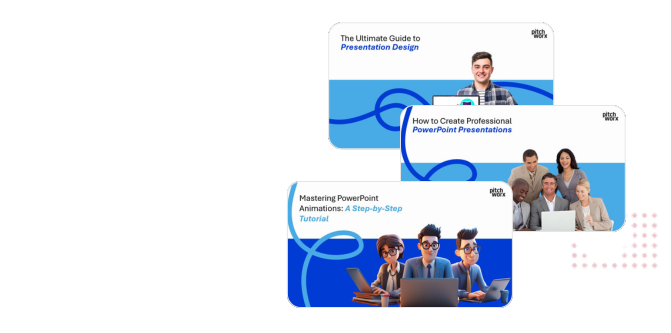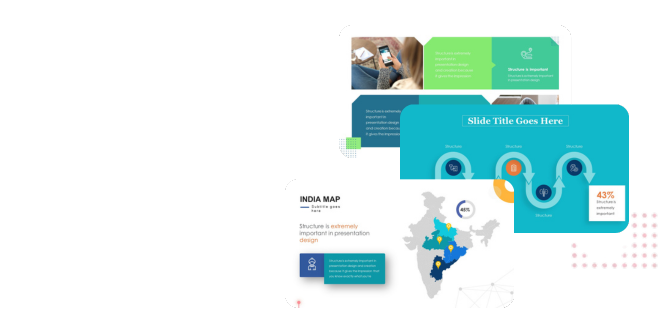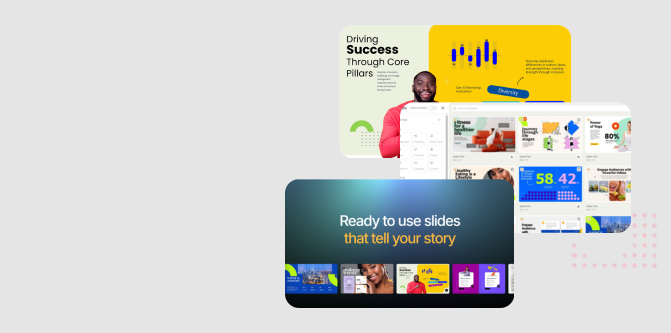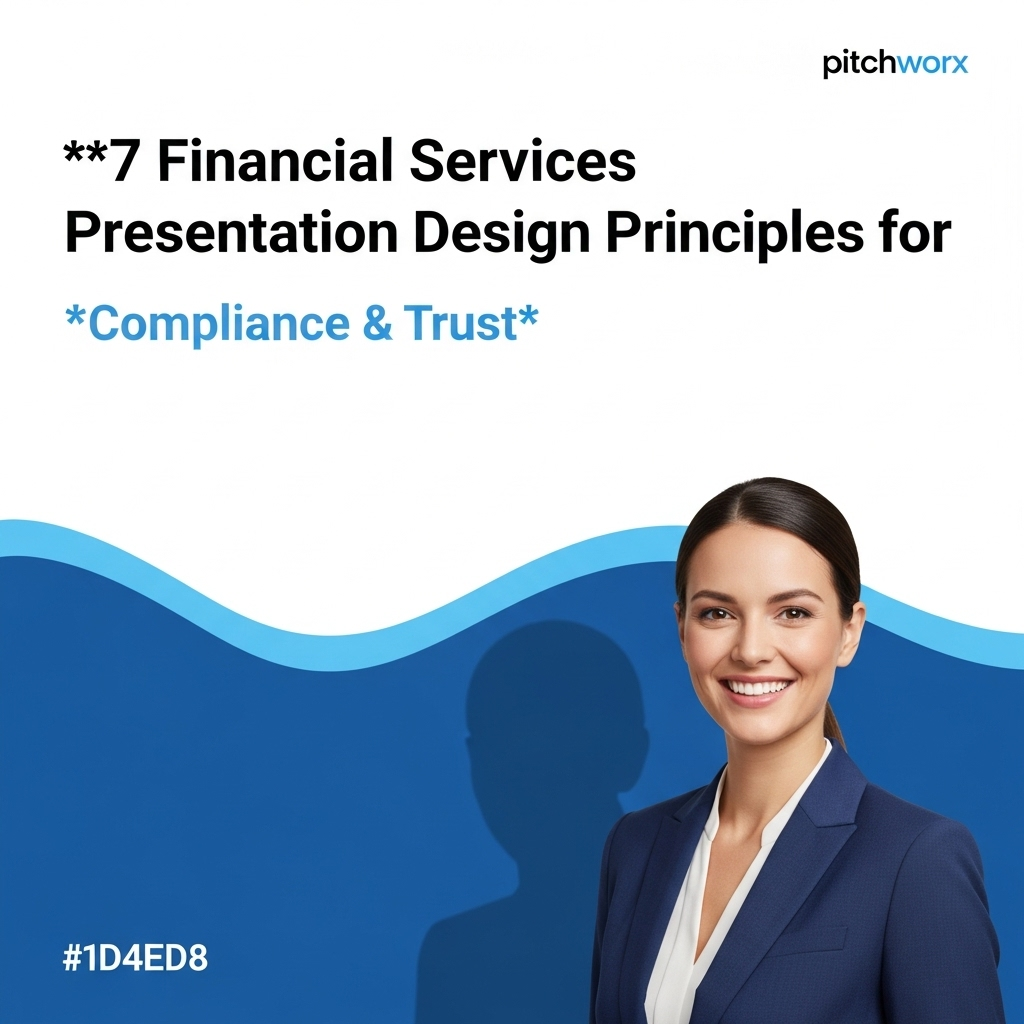Quick Answer
Financial services presentation design is the specialized process of creating clear, compliant, and secure presentations to build client trust. According to a recent Deloitte report, transparency is a key driver of trust for consumers. Effective design must: 1. Uphold strict data accuracy and security. 2. Adhere to all regulatory guidelines (FINRA, SEC). 3. Employ clear data visualization to simplify complexity.
Table of Contents
- Introduction
- The High-Stakes Problem: Why Generic Design Fails in Finance
- The Root Causes of Distrust and Non-Compliance in Presentations
- The Solution: A Framework for Trust-Centric Presentation Design
- Step-by-Step Implementation: Building a Compliant Presentation
- Frequently Asked Questions
- Conclusion: Design as a Function of Trust
Introduction
Imagine a wealth management firm presenting a new investment fund. The slides are filled with dense charts, ambiguous data sources, and complex jargon. While visually slick, the presentation feels more like a high-pressure sales pitch than a source of trusted financial advice. This single interaction can subtly erode client confidence, raising questions about transparency and intent. In the financial sector, this is a critical failure. Effective financial services presentation design transcends aesthetics; it is a crucial tool for building and maintaining client trust while navigating a complex web of regulatory requirements.
Unlike presentations in other industries where a design flaw might lead to a missed opportunity, in finance, it can trigger regulatory scrutiny, legal liabilities, and irreparable brand damage. Every claim, chart, and number must be defensible, transparent, and clear. This places an immense burden on firms to balance persuasive communication with unwavering compliance. The challenge lies in creating materials that are not only compelling but also fundamentally trustworthy. This article provides a comprehensive framework for achieving that balance, outlining the core principles our agency has refined over 13 years to help financial institutions communicate with clarity, confidence, and compliance.
The High-Stakes Problem: Why Generic Design Fails in Finance
Applying standard presentation design practices to the financial services industry is not just ineffective; it is actively dangerous. The stakes are fundamentally higher due to a unique combination of regulatory oversight, client sensitivity, and the complexity of the information being conveyed. A generic approach, focused solely on visual appeal or simplistic messaging, fails to address the core requirements of the sector.
The Regulatory Gauntlet: More Than Just Fine Print
Financial communications are policed by a host of regulatory bodies like the Securities and Exchange Commission (SEC) and the Financial Industry Regulatory Authority (FINRA) in the U.S., with similar counterparts globally. These organizations have stringent rules regarding marketing materials, performance reporting, and disclosures. A misleading chart, an unsubstantiated claim, or even improperly placed disclosure text can result in severe penalties. According to industry data, financial firms face billions in fines annually for non-compliance. A presentation is considered marketing material and falls under this intense scrutiny. Simply adding a disclaimer slide at the end is no longer sufficient; compliance must be woven into the very fabric of the design.
The Fragility of Client Trust
Trust is the primary currency in the financial world. Clients entrust firms with their life savings, retirement funds, and corporate futures. Any perception of ambiguity or obfuscation can shatter this trust instantly. A generic presentation that prioritizes style over substance often raises red flags. For instance, using overly complex charts that obscure rather than clarify, or making bold claims without citing verifiable sources, can make a client feel manipulated rather than informed. As research from sources like the Edelman Trust Barometer consistently shows, transparency and ethical behavior are paramount for building consumer confidence in financial institutions.
The Inherent Complexity of Financial Data
Financial topics—from portfolio diversification and risk analysis to derivatives trading—are inherently complex. A generic design approach often fails to provide the tools needed to simplify this complexity without sacrificing accuracy. Designers without specific domain expertise may create visuals that look good but are mathematically or conceptually flawed. For example, using a pie chart to represent non-proportional data or using a truncated Y-axis to exaggerate performance gains are common mistakes that would be caught by a financially literate audience and could be deemed misleading by regulators. Specialized financial services presentation design requires a deep understanding of the subject matter to ensure that the visuals are a true and ethical representation of the data.
The Root Causes of Distrust and Non-Compliance in Presentations
Failures in financial presentations rarely happen by malicious intent. Instead, they typically stem from ingrained habits, workflow inefficiencies, and a fundamental misunderstanding of how design impacts perception and risk. Identifying these root causes is the first step toward building a more robust and trustworthy communication strategy.
What Leads to Opaque Data and Complex Jargon?
Financial professionals are immersed in a world of acronyms and technical terms. This “curse of knowledge” makes it difficult for them to communicate with audiences who lack the same background. Presentations become filled with terms like “alpha,” “beta,” “standard deviation,” and “quantitative easing” without proper explanation. Data visualizations are often created for internal analysis, not external communication, leading to overly dense charts packed with information that overwhelms rather than enlightens. This creates a barrier, making the audience feel excluded and suspicious of what might be hidden within the complexity.
How Do Inconsistent Disclosures Create Risk?
Disclosures are a legal necessity, but firms often treat them as an afterthought. This leads to inconsistency across different presentations and marketing materials. One presentation might have a detailed disclosure on a slide, another might hide it in a tiny footer, and a third might omit it entirely. This lack of a standardized, templated approach not only increases compliance risk but also signals disorganization to clients. When disclosures appear to be an inconvenient addition rather than an integrated part of the content, it suggests that transparency is not a core value of the firm.
Why Are Security Oversights So Common?
In the digital age, a presentation is a data file that travels. These files can contain sensitive, non-public information. Common oversights include failing to scrub metadata from files (which can reveal authors, edit history, and internal notes), sharing editable files instead of secured PDFs, and using unencrypted third-party platforms for distribution. Our agency’s ISO 27001 certification underscores the importance we place on information security. Failing to manage the presentation file as a secure asset can lead to data leaks, a critical breach of client confidentiality and trust.
When Does Prioritizing Sales Over Education Backfire?
The ultimate goal of many financial presentations is to secure an investment or win a client. However, an aggressive “hard sell” approach often proves counterproductive. When the language is overly promotional, focuses exclusively on upside potential without adequately addressing risk, and pressures the audience for an immediate decision, it undermines the presenter’s credibility. Modern clients, especially in the high-net-worth and institutional spaces, are sophisticated. They expect to be educated and empowered to make their own informed decisions. A presentation that feels like a sales pitch triggers skepticism and defensive posturing, destroying the consultative relationship that true financial advising requires.
The Solution: A Framework for Trust-Centric Presentation Design
To overcome these challenges, financial firms must adopt a new mindset where design is not a final coat of paint but a foundational element of the communication strategy. A trust-centric framework integrates compliance, clarity, and security from the very beginning of the presentation development process. This approach is built on three core principles that our team has seen deliver consistent results.
Principle 1: Radical Transparency in Data Visualization
The goal of a financial chart should be to provide insight, not just to impress. Radical transparency means designing visuals that are honest, clear, and easy to interpret correctly. This involves several key practices:
- On-Slide Sourcing: Never make an audience search for a data source. Every chart, graph, or statistic should have its source clearly attributed directly on the slide (e.g., “Source: Bloomberg Terminal, as of Q4”).
- Avoiding Misleading Axes: Always start bar chart Y-axes at zero to represent data in its true proportion. Avoid logarithmic scales unless the audience is highly technical and it’s clearly labeled.
- Clear Labeling: Label everything explicitly. Avoid relying on complex legends. Use direct labels for chart segments, data points, and trend lines to reduce cognitive load.
- Simplicity Over Spectacle: Avoid 3D charts, gradients, and other decorative effects that can distort data perception. A simple, clean 2D chart is almost always more effective and trustworthy.
Principle 2: A Compliance-by-Design Workflow
Compliance should not be a final hurdle to clear before a presentation is released. It must be an integral part of the workflow from the outset. This “shift-left” approach to compliance saves immense time and reduces risk. At PitchWorx, our experience with major financial clients has shown that a compliance-by-design process is critical. This involves creating a master template library with pre-approved disclosure language, branding, and chart formats. The compliance team is involved in the briefing and storyboarding phase, not just the final review. This proactive collaboration ensures that the core narrative and visuals are built on a compliant foundation, preventing costly and time-consuming rework later. This is a core tenet of our specialized work for fintech clients.
Principle 3: Security as a Core Design Feature
A presentation’s security is as important as its content. Building security into the design process means controlling the entire lifecycle of the document. This includes:
- Creating Secure Templates: Building master templates that have security features enabled by default.
- Implementing Version Control: Using a systematic process to track changes and ensure that only the final, approved version of a presentation is in circulation.
- Establishing Secure Distribution Protocols: Defining clear company policies on how presentations can be shared. This often means using secure data rooms or encrypted email links and distributing flattened, non-editable PDF versions externally.
The following table illustrates the practical differences between a generic approach and a trust-centric one.
| Aspect | Generic Design Approach | Trust-Centric Design Approach |
|---|---|---|
| Data Sourcing | Vague or missing sources (“Internal analysis”) | Clearly attributed on every slide with dates |
| Disclosures | Hidden in small footer text or on a final slide | Integrated, readable, and standardized across all materials |
| Chart Design | Visually impressive but potentially misleading (e.g., 3D charts) | Clean, simple, and mathematically honest (e.g., 2D charts, zero-based axis) |
| Language | Heavy with industry jargon and acronyms | Plain language focused on client understanding |
| Primary Goal | Persuade and sell | Educate and empower |
About PitchWorx
With 13+ years of presentation design experience and 150,000+ slides created, PitchWorx is an ISO 27001 certified agency trusted by Fortune 500 companies across US, India, and UAE markets. Our expertise spans healthcare, technology, and financial services, where we specialize in creating presentations that are clear, compliant, and compelling.
Step-by-Step Implementation: Building a Compliant Presentation
Adopting a trust-centric framework requires a structured and disciplined process. Simply knowing the principles is not enough; they must be translated into a repeatable workflow that ensures consistency and quality. The following steps provide a practical guide for creating a compliant and effective financial presentation from start to finish.
How to Implement a Compliant Workflow
Step 1: The Content and Compliance Brief
Before any design work begins, the first step is to consolidate all necessary inputs. This is the most critical phase for preventing errors down the line. The brief should include the final, approved copy for the presentation, all data sets with their original sources, and the specific disclosure language required by the compliance department. Getting sign-off on the raw content *before* it enters the design phase ensures that the design team is working with accurate, approved information, preventing wasted effort on slides that will later be rejected for content reasons.
Step 2: Structuring the Narrative for Clarity
With the approved content in hand, the next step is to structure it into a logical narrative. This is often done through a low-fidelity storyboard or outline. The goal is to create a flow that educates the audience progressively. A typical structure might be: Problem/Opportunity -> Proposed Solution/Strategy -> How It Works -> Performance & Data -> Risk Factors -> Next Steps. This educational approach builds credibility before moving to a call to action. Each slide should focus on a single, core idea to avoid overwhelming the audience.
Step 3: Designing and Sourcing Data Visuals
This is where the principle of radical transparency comes to life. For each data point that needs to be visualized, the designer should select the most appropriate chart type to represent the information honestly. A line chart is best for showing trends over time, a bar chart for comparing quantities, and a scatter plot for showing relationships. The designer must ensure that all sources and dates are clearly visible on the slide and that the design adheres to the company’s pre-approved brand and compliance templates.
Step 4: Integrating Disclosures Seamlessly
Disclosures should be treated as a key content element, not a nuisance. Instead of relegated to unreadable footers, they should be designed for clarity. This might mean using a dedicated, well-formatted section on a slide or using callout boxes that link a specific claim to its corresponding disclosure. The key is to make the information accessible and legible, demonstrating a commitment to transparency. We have found this approach essential in our work, and you can see examples in our works.
Step 5: The Pre-Flight Security and Compliance Check
Before the presentation is distributed, it must undergo a final, rigorous check. This is not just a quick proofread. This final review should be a formal checklist process that includes:
- Compliance Sign-Off: A final review by the legal or compliance team against the approved brief.
- Data Verification: A double-check of all numbers and chart visuals against the original source data.
- Metadata Scrub: Removing all internal comments, author names, and revision history from the file properties.
- Format Lock: Converting the final presentation to a secured, non-editable PDF for external distribution to prevent unauthorized changes.
Related Services
Frequently Asked Questions
Q1: What is the most important element in financial services presentation design?
The single most important element is demonstrable trustworthiness. This is achieved through a combination of unwavering data accuracy, radical transparency in how information is presented, and strict adherence to regulatory compliance. While aesthetics matter, they must always serve the primary goal of building client confidence and ensuring clarity.
Q2: How do you ensure FINRA and SEC compliance in a presentation?
Ensuring compliance requires a proactive process. Best practices include involving the compliance department from the very beginning of the content creation phase, using pre-approved master templates with standardized disclosure language, maintaining a meticulous audit trail for all data sources, and conducting a formal compliance review as a final step before distribution.
Q3: What are common data visualization mistakes to avoid in finance?
Common mistakes that erode trust include using a truncated Y-axis on bar charts to exaggerate growth, employing confusing 3D chart effects that obscure data points, “cherry-picking” data ranges to present a misleadingly positive picture, and failing to clearly label axes, data points, and sources on every single chart.
Q4: How can design simplify complex financial topics for an audience?
Design simplifies complexity by controlling the flow of information. Techniques include using progressive animation to reveal data points one by one, employing a clear visual hierarchy to guide the viewer’s eye, utilizing a simple color palette to group related information, creating custom icons to represent complex ideas, and dedicating each slide to a single, digestible concept.
Q5: What is the role of storytelling in a compliant financial presentation?
Storytelling provides the “why” behind the data, creating a memorable context for the numbers. A compliant story might explain the market conditions that led to a specific strategy or the client problem a particular product solves. However, the narrative must be grounded in verifiable facts and avoid hyperbole, speculation, or any claims that cannot be substantiated by the data presented.
Q6: How does ISO 27001 certification benefit presentation design agencies?
ISO 27001 certification is a formal standard for Information Security Management. For an agency, it proves they have rigorous systems in place to protect sensitive client data. This is critical in finance, where presentations contain non-public information. It assures clients that their confidential data is handled with the highest level of security throughout the design process.
Conclusion: Design as a Function of Trust
In the final analysis, financial services presentation design is not a decorative art; it is a critical business function rooted in risk management and relationship building. Every design choice—from the type of chart selected to the placement of a disclosure—is a signal to the client about the firm’s integrity, transparency, and professionalism. By moving away from generic, sales-focused approaches and embracing a framework centered on trust, firms can transform their presentations from a potential liability into a powerful asset.
Adopting a process that integrates compliance, promotes data transparency, and prioritizes security is the only sustainable way to communicate effectively in this high-stakes industry. This disciplined approach not only protects the firm from regulatory risk but also serves the best interest of the client, fostering the long-term relationships that are the bedrock of the financial services world.
Ready to transform your presentations into conversion tools? Our presentation design services help businesses across global markets including US, India, and UAE. View our portfolio to see results that drive action.










